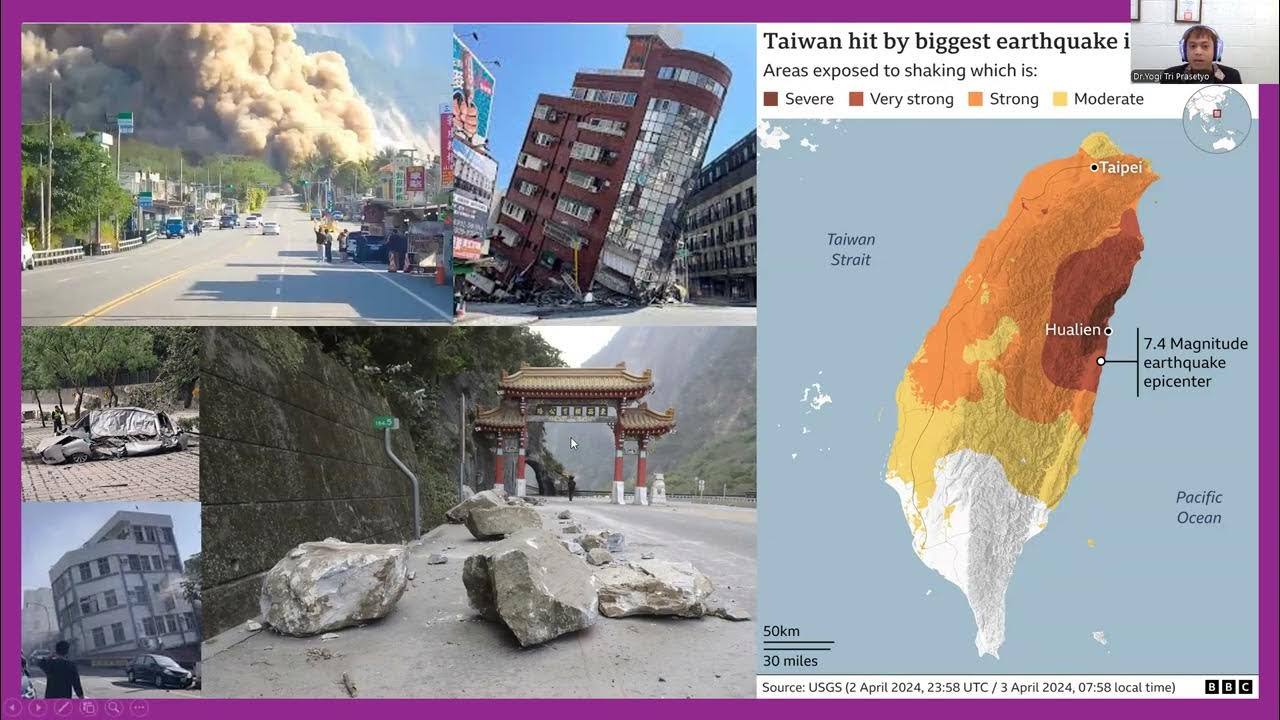Project DINA: Typhoon
Summary
TLDRThe video script emphasizes disaster preparedness in the Philippines, focusing on natural calamities like typhoons and floods. It advises viewers to check their homes, stock up on essentials, and prepare an emergency kit. The script also encourages staying informed through radio and social media, and advises on safety measures during and after storms, including securing homes and avoiding floodwaters. It highlights the importance of community readiness and the role of nature in purifying the atmosphere.
Takeaways
- ⚠️ Natural disasters like typhoons, volcanic eruptions, earthquakes, and fires are inevitable but can be prepared for.
- 📢 Project Dina is an initiative to raise nationwide awareness about disasters and provide information on how to prepare for them.
- 🏠 Before a typhoon, it's crucial to inspect homes for loose parts and stock up on emergency food supplies like canned goods and non-perishable items.
- 💧 Ensure a three-day supply of drinking water and check that gas tanks are full to prepare for potential power outages.
- 📄 Gather important documents and place them in waterproof containers to keep them safe from water damage.
- 🔦 Prepare an emergency survival kit that includes a flashlight, battery-powered radio, and extra batteries for your phone.
- 🐕 Secure your pets by moving them to higher ground and have a plan for their safety during disasters.
- 📡 Stay informed during a typhoon by listening to the radio, reading newspapers, and monitoring social media and television for updates.
- 🏡 After the typhoon, check your home for damages and ensure no electrical outlets or cables are submerged in water before turning on the main power switch.
- 🌳 Typhoons, while destructive, help clean the atmosphere and provide additional water supply to dams, especially during the dry season.
Q & A
What is the purpose of Project Dina?
-Project Dina is designed to provide nationwide awareness about disasters, aiming to equip people with the necessary knowledge on what to do during calamities to ensure the safety of families and communities.
How often do typhoons usually occur in the Philippines?
-Typhoons frequently affect the Philippines, with an average of about 20 typhoons entering the Philippine area of responsibility each year.
What are the common effects of typhoons mentioned in the script?
-Typhoons often result in strong winds and heavy rainfall, which can lead to landslides, storm surges, and flooding.
What preparations are advised for homes before a typhoon arrives?
-It is advised to inspect the home for loose parts that can be secured, stock up on non-perishable food items, gather drinking water for up to three days, and ensure there is enough fuel for cooking.
Why is it important to prepare an emergency survival kit?
-An emergency survival kit is important because it contains essential items such as important documents, non-perishable food, water, and other supplies that can be used in case of emergencies during disasters.
What should be done with pets during a typhoon?
-Pets should be secured in higher ground to keep them safe from the storm and potential flooding.
What is the advice for fishermen during a typhoon?
-Fishermen are advised not to go out to sea during a typhoon due to the dangerous storm surges.
How can one stay informed during a typhoon?
-Staying informed during a typhoon can be done by listening to the radio, reading newspapers, checking various social networking sites, and watching television for updates.
What safety measures should be taken before evacuating during a power outage?
-Before evacuating during a power outage, one should not leave candles or gas stoves on, and if advised to evacuate, ensure to close all windows, lock doors, and turn off the main electrical switch.
What should be done after a typhoon has passed to ensure safety?
-After a typhoon, one should check the house for damages, ensure no electrical outlets or cables are submerged in water before turning on the main switch, and dispose of any stagnant water to prevent mosquito breeding.
How do typhoons and the rain they bring benefit the environment?
-Typhoons and the rain they bring help in clearing dust from the atmosphere and the ocean, and also contribute to the additional water supply in dams, especially during the dry season.
Outlines

Esta sección está disponible solo para usuarios con suscripción. Por favor, mejora tu plan para acceder a esta parte.
Mejorar ahoraMindmap

Esta sección está disponible solo para usuarios con suscripción. Por favor, mejora tu plan para acceder a esta parte.
Mejorar ahoraKeywords

Esta sección está disponible solo para usuarios con suscripción. Por favor, mejora tu plan para acceder a esta parte.
Mejorar ahoraHighlights

Esta sección está disponible solo para usuarios con suscripción. Por favor, mejora tu plan para acceder a esta parte.
Mejorar ahoraTranscripts

Esta sección está disponible solo para usuarios con suscripción. Por favor, mejora tu plan para acceder a esta parte.
Mejorar ahoraVer Más Videos Relacionados

Values Education 7| MATATAG| Lesson 6| Day 1| Mga Uri at Karaniwang Kalamidad sa Pilipinas

Project DINA: Volcano Eruption

Disaster Readiness & Risk Reduction ( DRRR)- Lesson 1: BASIC CONCEPTS OF DISASTER AND DISASTER RISK

VULNERABILITY [Types of Vulnerability] | DRRR

Mga nasawi sa Bagyong Kristine at Leon, inalala; PBBM: ‘Di sasapat ang tugon pero... | 24 Oras

Applied Cognitive and Macro Ergonomics for Sustainable Disaster Risk Reduction
5.0 / 5 (0 votes)
